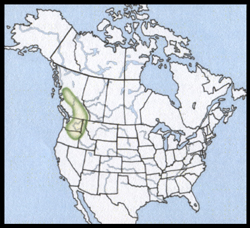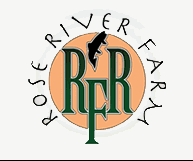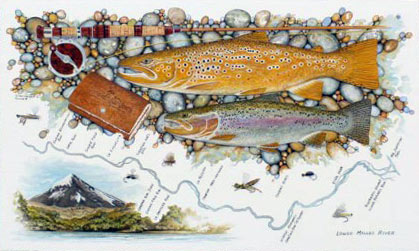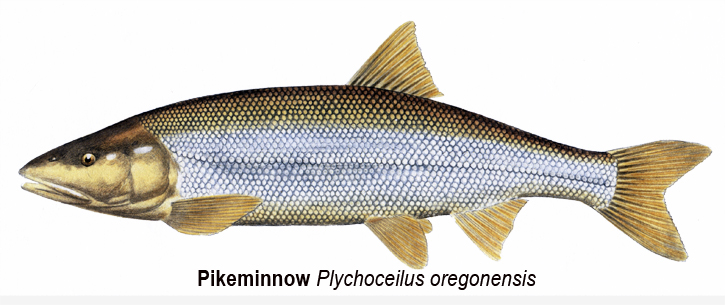Pikeminnow, October 2013, Fish of the Month!
A Brief Note to Our Readers:
Arranged in taxonomic (scientific) order, this column has, with this entry, passed out of the realm of our fly rod glamour species, the Trouts and Salmons (and even the Pikes), and into a broader realm of generally warm water-loving species. To this end, we’ll jump into these habitats and species with both feet and begin with the Minnows.
“Minnows?!?” we can hear you exclaiming. Yes, minnows. “You mean there are 30 pound minnows?!?” Yup, there are and we’re going to lead into all this with two of them.
Northern Pikeminnow
(formerly known as Northern Squawfish)
Plychoceilus oregonensis
Local Names:
Columbia River dace, Columbia River squawfish, Columbia squawfish
Average Size:
16 to 24 inches
1 to 6 pounds
Distinguishing Field Marks:
Color and color pattern are reliable distinguishing field marks for this species. (See the illustration.)
-
Distinctly large head and large mouth.
-
The upper jaw extends to the mid-point of the eye.
-
Elongated minnow-shaped body.

-
There is no adipose fin.
-
The tail fin is moderately forked.
North American Range:
Map to the right shows approximate range in North America.
Diet:
The young feed on aquatic invertebrates, especially insects, then graduate to a diet of fish, crayfish and, when available, the eggs of other fish, including squawfish.
Fly Fishing for Pikeminnow:
Before various environmental factors caused significant declines in western trout and salmon populations, northern squawfish were considered no more than a minor nuisance to anglers. Recently, however, the species has come to the forefront as a significant predator and is high on the list of unwanted species. In less compromised trout and salmon habitats, the Northern pikeminnow might have continued to remain "under the radar."
These fish are usually only taken incidentally within their rather limited range by trout and salmon fly-fishers. No one with any sense is very likely to mount a fishing expedition specifically for them. Because there is nothing very exciting or glamorous about these over-size minnows, you might be wondering why we've chosen to include them in this monthly fly-fishing column. Well, the reason is a rather sad one. With the recent declines in Pacific salmon and trout species within the pikeminnow's range, this unusually large member of the Minnow family has begun to play a significant role in continuing that decline. They're doing this by feeding on the same forage as do trout and salmon, namely aquatic insects, other fishes, and, when available, the eggs of other species, including trout and salmon eggs. This is having enough impact on the latter to have prompted fish regulatory agencies within the species' range to place bounties on pikeminnows. Unless fly-rod bounty hunting for these fish appeals to you, we're not suggesting that you make a crusade of hunting and destroying them. However, when you're fishing within their range and accidentally happen to get one or many to hand, be aware that your releasing them is frowned upon by fish managers. If you read this column with any regularity, you're probably aware that we advocate catch and release fly fishing as a standard practice. This species breaks that rule of thumb and, in its case, killing those that you catch will actually be a service to maintenance (and perhaps even the increase) of the local trout and salmon species' populations.
Significance to Humans:
No major significance.
Status:
Thriving, entirely through natural reproduction.







